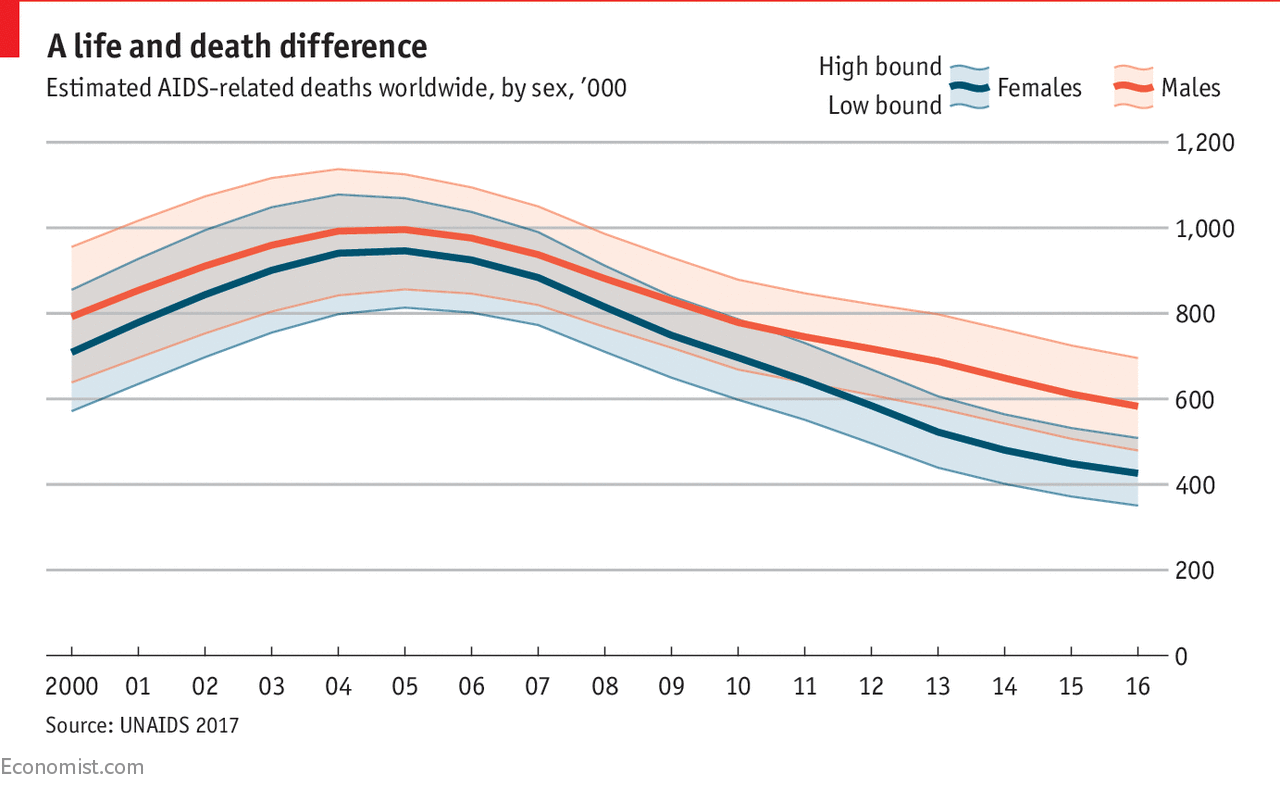Some good news and some bad, in the fight against HIV

A dispatch from the battle front
 Jul 20th 2017
Jul 20th 2017

A dispatch from the battle front
 Jul 20th 2017
Jul 20th 2017
THE latest progress report* from UNAIDS, the United Nations body charged with combating HIV and AIDS, brings mixed news. On the positive side, as the chart shows, the death rate from AIDS continues to fall. In 2016 there were 1m AIDS-related fatalities, down from 1.9m in 2005, the year of peak mortality. This reflects the successful promulgation of antiretroviral drugs in almost all parts of the world to those already infected. Such drugs can keep symptoms at bay indefinitely, prolonging lifespans to those enjoyed by the uninfected.
As the chart also shows, the death rate among women and girls is both lower than that for men and boys, and is also falling faster. This is despite both sexes having similar rates of infection (indeed, at 51% of the infected population, females carry a slightly higher burden of the disease). This inequality probably reflects both earlier diagnosis of women, whose HIV status is checked routinely at antenatal clinics, and a more responsible female attitude towards taking any drugs prescribed. It also suggests that consideration should be given as to how campaigns can be designed more effectively to reach and penetrate the brains of men.
Less happily, the rate of new infections, though dropping, is not doing so as fast as UNAIDS and its allies had hoped. In 2016 1.8m people became infected. That is down from a peak of 3.2m in 1997, but has declined by only 16% since 2010. On present trends, the official UN target of reducing the figure to 500,000 a year by 2020 looks hopelessly optimistic.
As to the idea of a cure for AIDS, namely a medication that will clear the virus from someone’s body completely, that also remains a distant prospect. For now, UNAIDS’s goal of 90/90/90—that 90% of those who are infected will know the fact, that 90% of those who know the fact will be on treatment and that in 90% of those being treated, the treatment will be effective—remains ambitious enough to be taxing (in 2016 the figures were 70%, 77% and 82% respectively), but realistic enough to be achievable.
